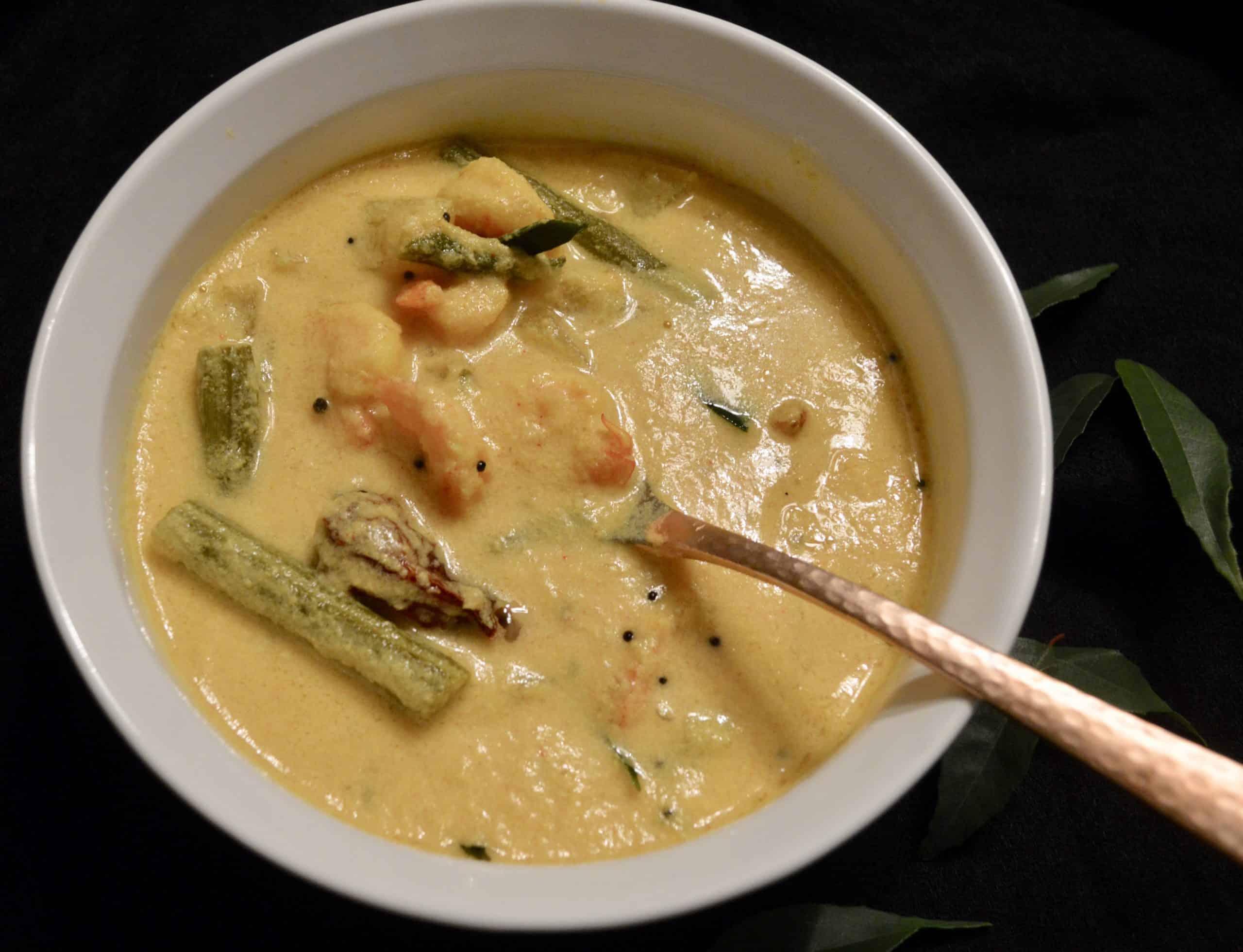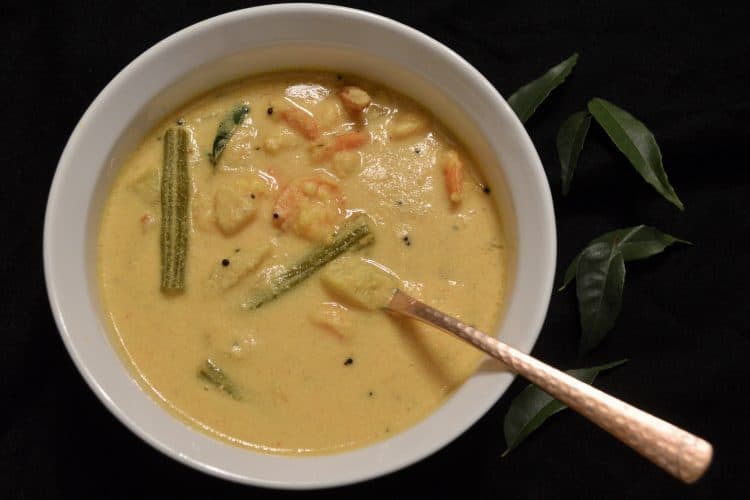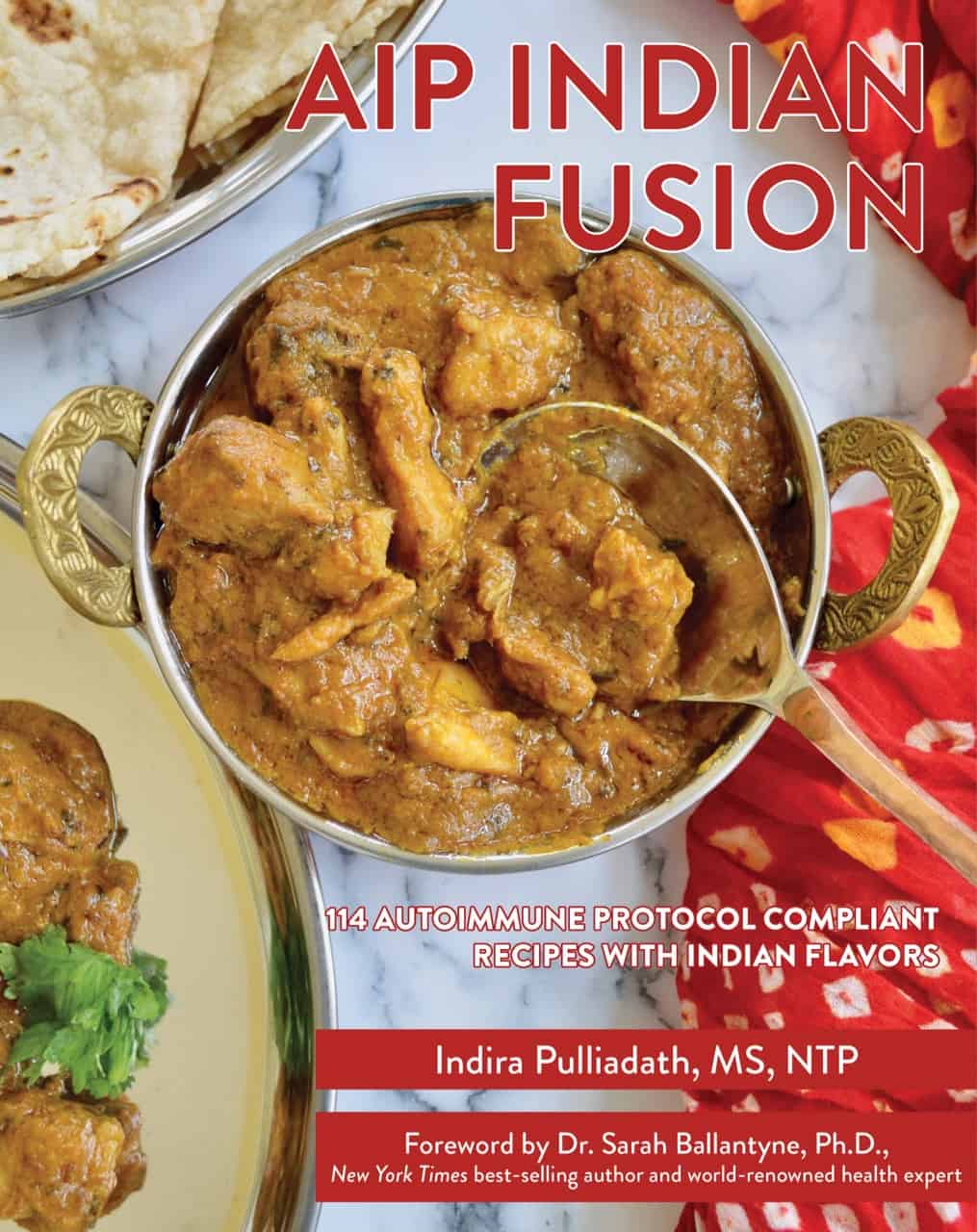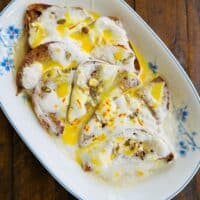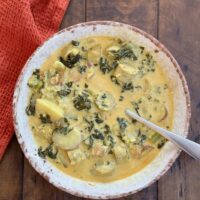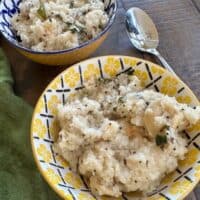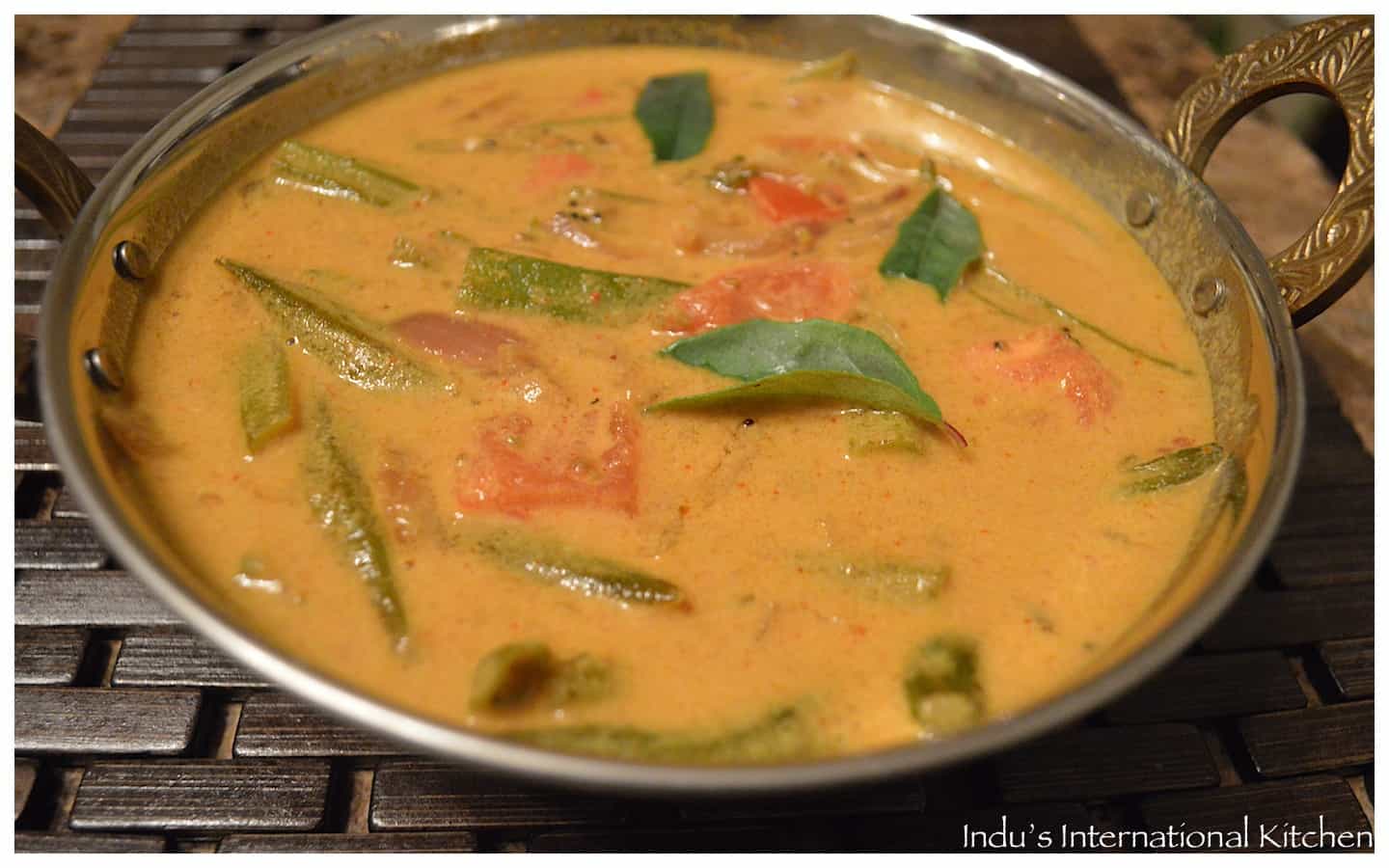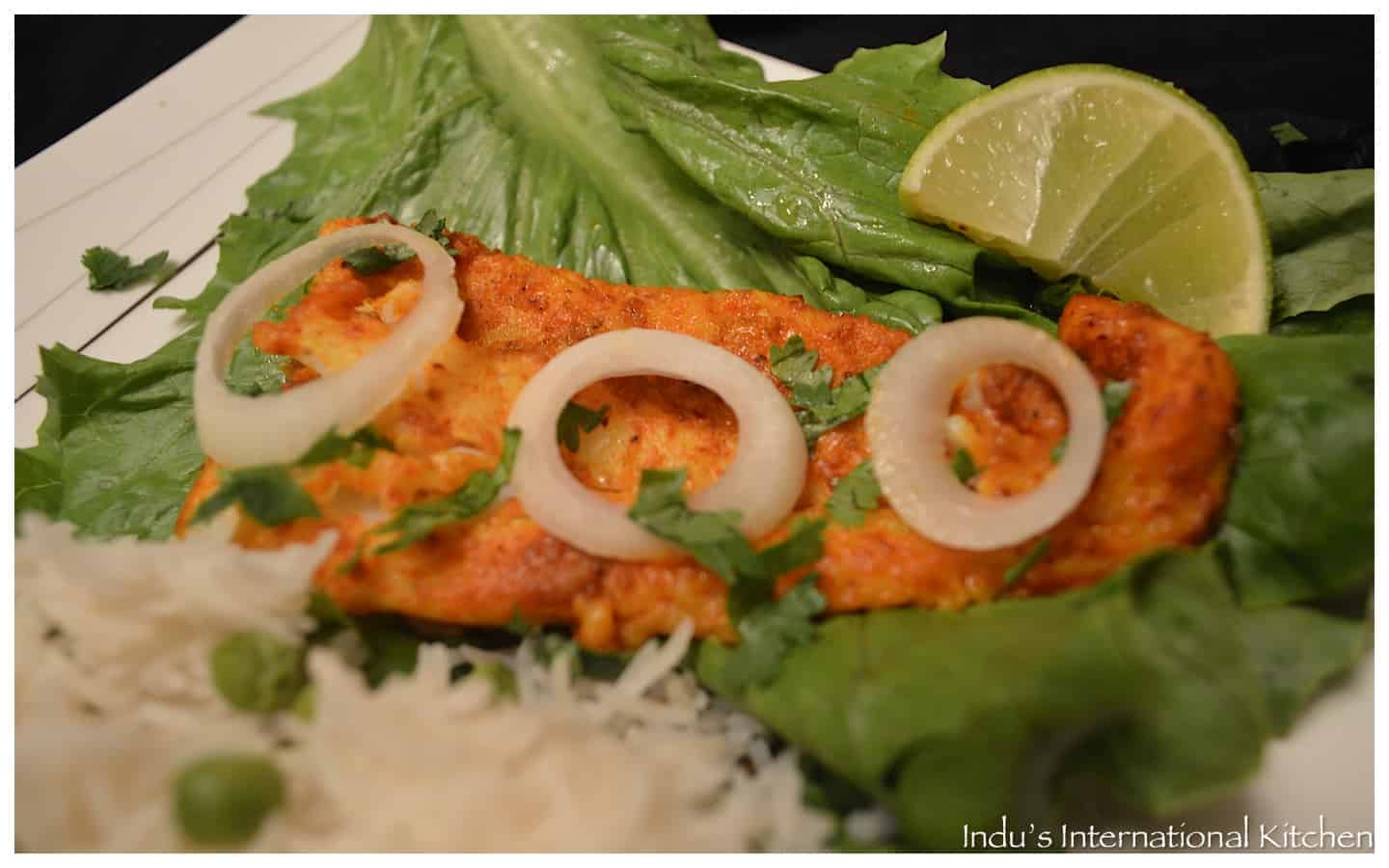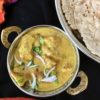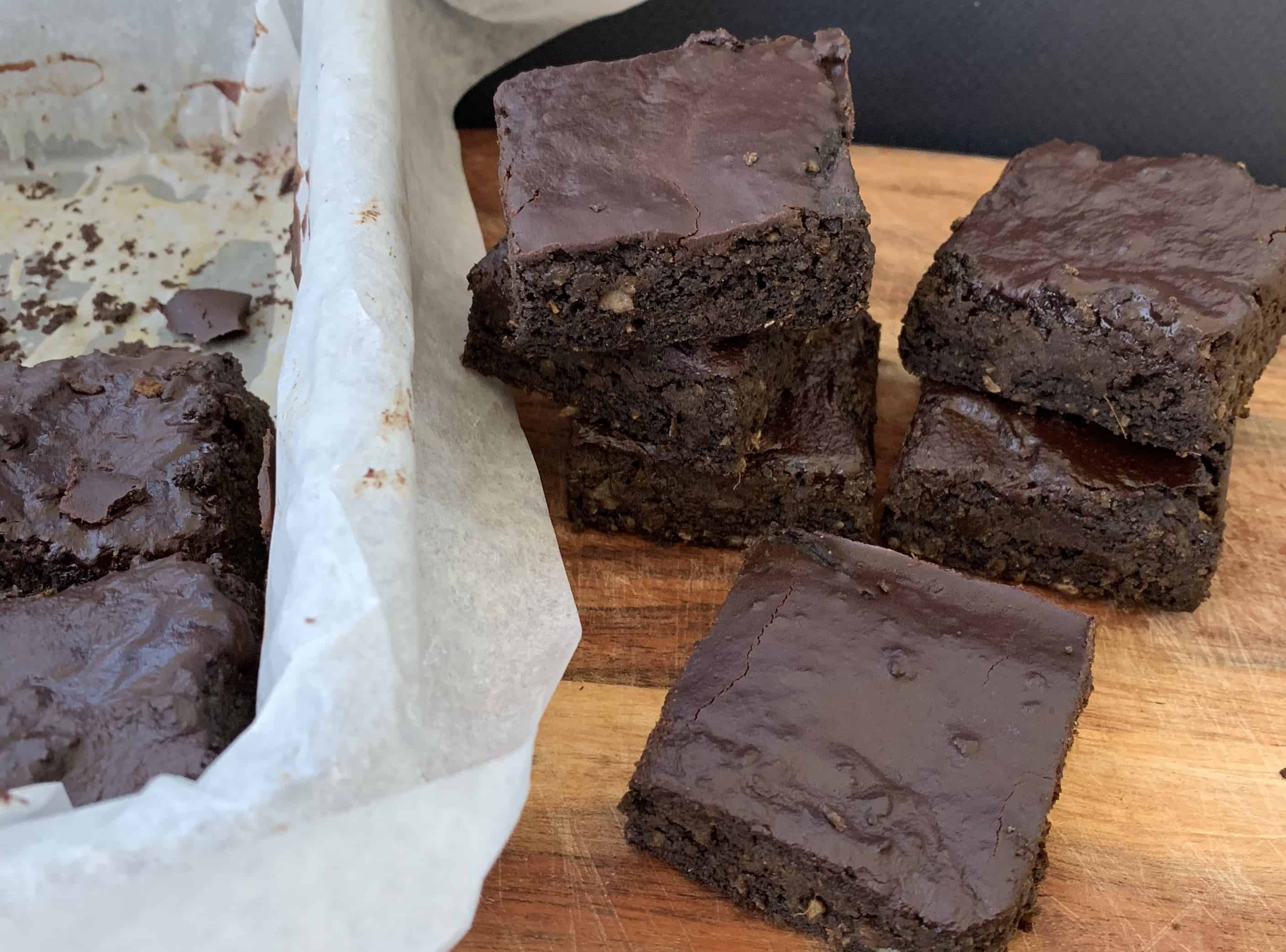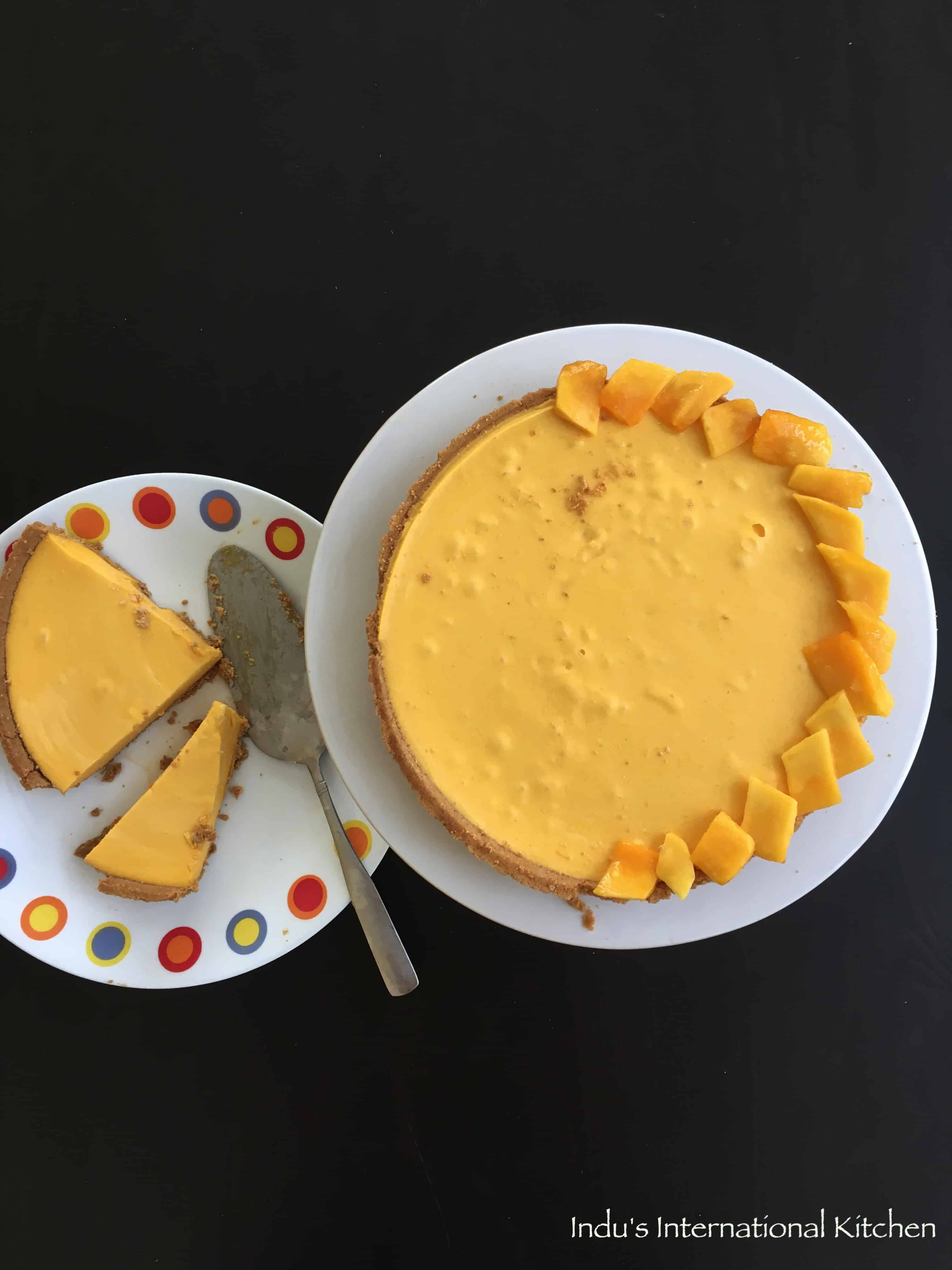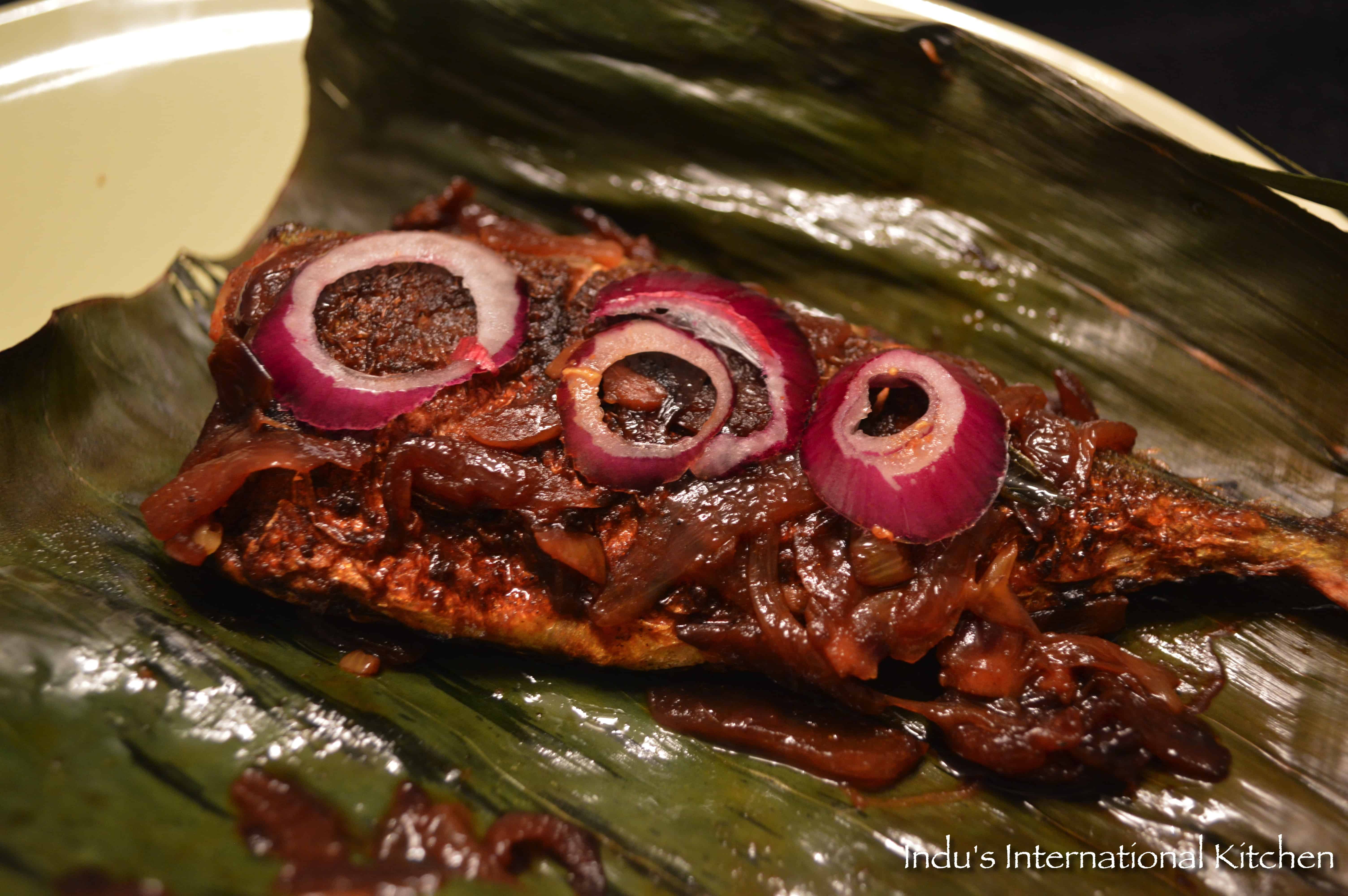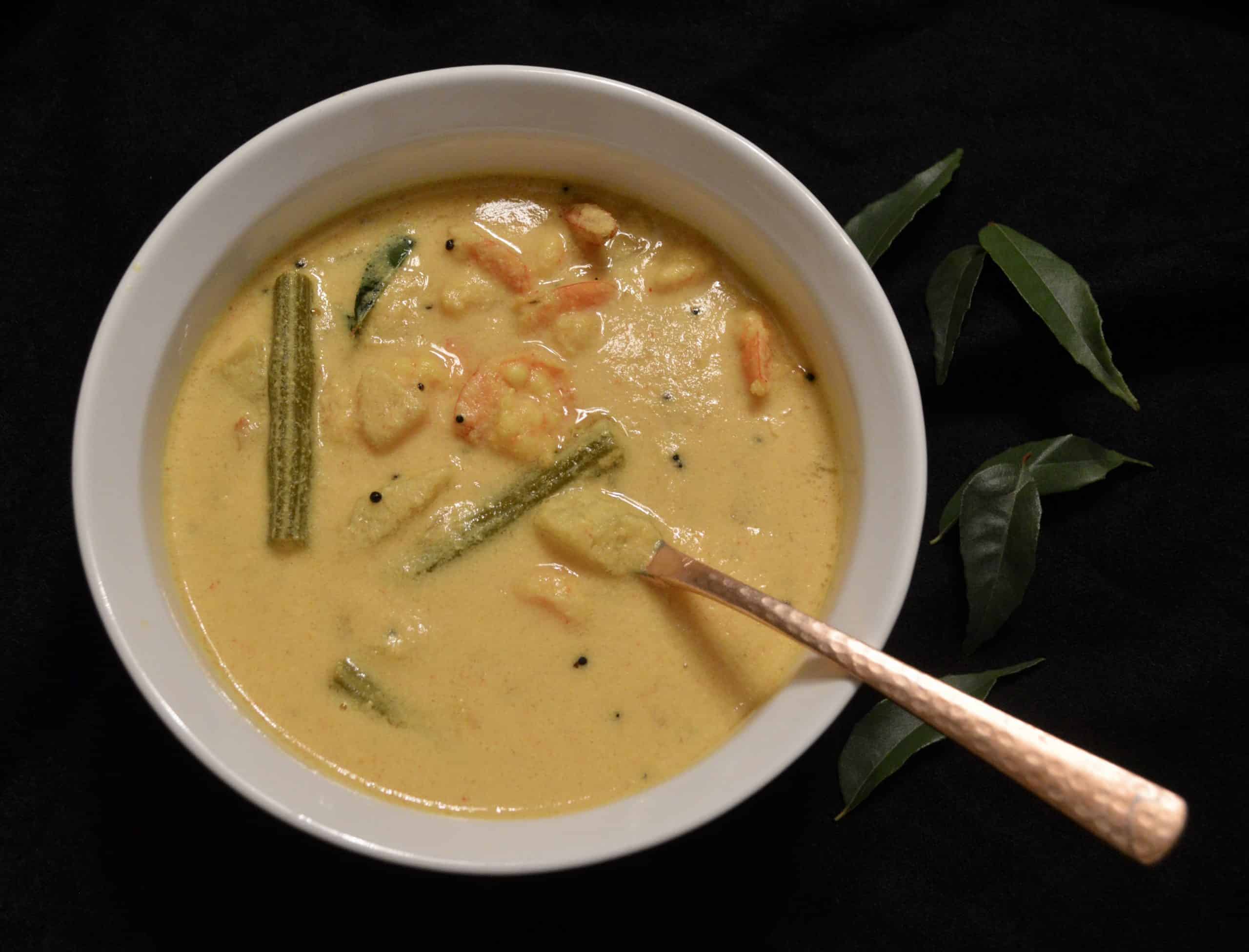 There are several varieties of seafood preparations in Kerala cuisine. The three types of fish / shrimp curries that my amma would make were brown curry, red curry and yellow curry — the brown being the most hot and spicy. She had labeled them as such for us kids since the actual traditional names are ‘a mouthful’, no pun intended.! In case you are interested, here are the actual names- Molagu and thenga arachada which means red chillies and coconut masala(Orange curry), Thenga arachada which means green chillies and coconut masala(Yellow curry), Thenga Varatha arachada which means roasted or browned coconut masala(Brown curry)
There are several varieties of seafood preparations in Kerala cuisine. The three types of fish / shrimp curries that my amma would make were brown curry, red curry and yellow curry — the brown being the most hot and spicy. She had labeled them as such for us kids since the actual traditional names are ‘a mouthful’, no pun intended.! In case you are interested, here are the actual names- Molagu and thenga arachada which means red chillies and coconut masala(Orange curry), Thenga arachada which means green chillies and coconut masala(Yellow curry), Thenga Varatha arachada which means roasted or browned coconut masala(Brown curry)
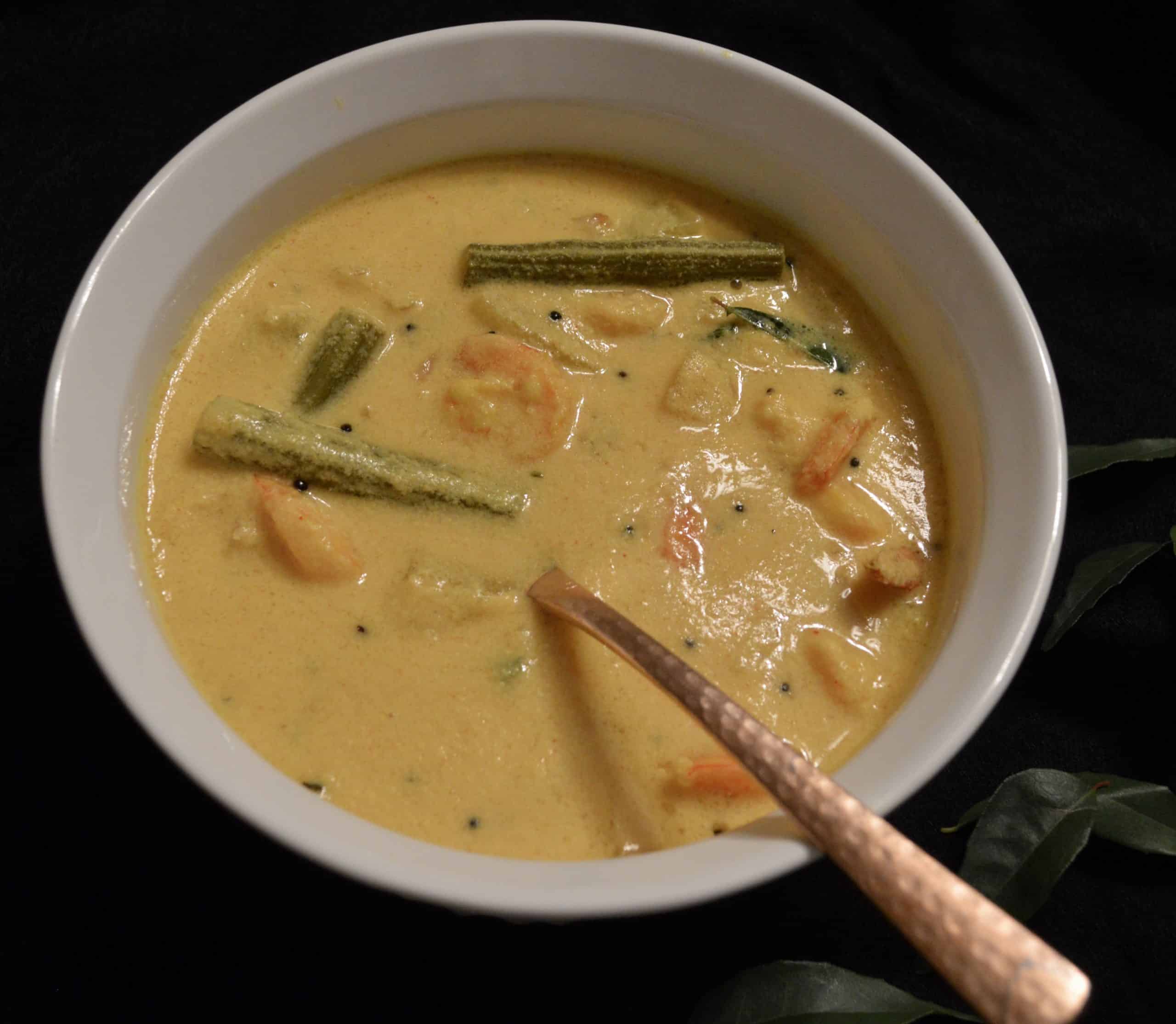 Yellow curry used to be my favorite as a kid since that was the least spicy. This yellow curry is relatively mild and has a slightly sweet and tangy flavor.These coconut based curries taste even better when cooked in an earthern (made of clay)pot. Amma always used to cook these in one of those pots and that’s why they used to have this distinctive and delicious earthy taste to them. Both the red and the yellow curry use ‘kodampuli’ which is the main ingredient that imparts the distinctive sour taste. So you really need to get your hands on this ingredient. However, one good substitute is green (raw) mango pieces. In fact in spring or early summer when green mangoes are in season, this curry is often prepared using them. In this type of curry, green plantains or muringakka(drumstick pieces) are often added and these taste quite good in the curry and in addition it helps to make a small amount of shrimp go a long way. Finally, the browned red onions in fresh coconut oil and the fresh curry leaves in the very end impart the distinctive flavor to this dish.
Yellow curry used to be my favorite as a kid since that was the least spicy. This yellow curry is relatively mild and has a slightly sweet and tangy flavor.These coconut based curries taste even better when cooked in an earthern (made of clay)pot. Amma always used to cook these in one of those pots and that’s why they used to have this distinctive and delicious earthy taste to them. Both the red and the yellow curry use ‘kodampuli’ which is the main ingredient that imparts the distinctive sour taste. So you really need to get your hands on this ingredient. However, one good substitute is green (raw) mango pieces. In fact in spring or early summer when green mangoes are in season, this curry is often prepared using them. In this type of curry, green plantains or muringakka(drumstick pieces) are often added and these taste quite good in the curry and in addition it helps to make a small amount of shrimp go a long way. Finally, the browned red onions in fresh coconut oil and the fresh curry leaves in the very end impart the distinctive flavor to this dish.
Amma used to always make a hot and spicy lentil side-dish of ‘moong’ to go with this curry and rice. And the fried Pappadums of course are also a mandatory side dish!
- ½ lb peeled fresh raw small or medium size shrimp(about 15-20 medium size)
- 1 cup raw (green) plantain thinly sliced or drumsticks
- cut into 1 inch pieces (Optional)
- 3-5 fresh green chillies slit (use 3 if you want mild, 5 if you want hot)
- ½ tsp red chilli powder (use ¼ tsp if you want it really mild)
- ½ tsp turmeric powder
- 1½ tsp salt
- 2-3 small pieces of kodampuli (soaked in 1 tbsp hot water for about 10 minutes)
- ½ cup water
- 1 cup freshly grated (or fresh frozen grated) coconut
- 1 tbsp red onions chopped
- 1 cup warm water
- 1 tbsp coconut oil
- 1 tsp mustard seeds
- fresh curry leaves -one sprig
- 1 tbsp finely minced red onions
- 2 medium-sized dried red chillies(torn in half)
- De-vein the shrimp and wash it nicely in cold water and place it in a nice medium size deep pot or vessel.
- To this pot , add the cut plantains or the drumstick pieces(if adding), green chillies, red chilli powder, turmeric , kodampuli (with the soaked water), salt and about ½ cup water.
- Keep this pot on the stove and once the water starts to boil , lower the heat to medium and cover the pan. Let it cook for about 5-7 minutes. Put the stove off and set aside.
- Now take the grated coconut - If you are using frozen grated coconut, thaw it first , either keeping it at room temperature for about an hour or by warming in a microwave oven for 30 seconds. Grind the coconut finely in a food processor or a blender with the 1 cup warm water along with the onions. The finer the texture of the ground coconut, the more delicious this curry will taste.
- Add the ground coconut paste to the cooked shrimp in the pot. Place on stove again and turn heat to low and allow the mixture inthe pot to simmer for about 2 minutes on medium flame. Do not let the coconut mixture boil. Then turn off the heat and keep aside.
- Lastly, take a small pan for doing the final tadka (oil garnish) and heat the coconut oil in it till you get the aroma. Then add the mustard seeds . When they start spluttering, add the red onions and as they begin t turn golden brown, add the curry leaves and the dried red chillies. Wait for 30 seconds and turn off the heat. Add this oil mixture on top of the shrimp and coconut curry.
- Serve with steamed parboiled rice and / brown rice.
Kodampuli is not a very standardized ingredient and hence I have suggested 2-3 small pieces but different varieties may be less or more sour so if you are using for the first time, I suggest using less than more since if the curry becomes too sour, it won't taste good. In the event it does get too sour, what you could do is add some coconut milk to make it more balanced. Salt also helps to balance the sour taste so add a little more salt if your curry turns out too sour.
